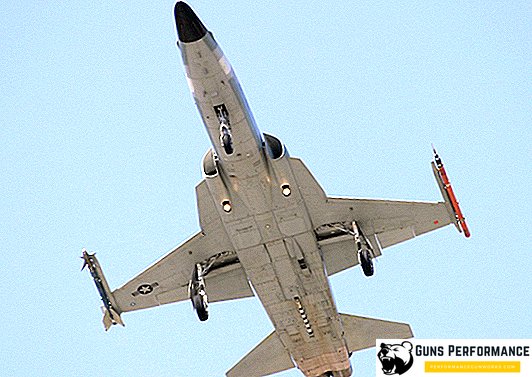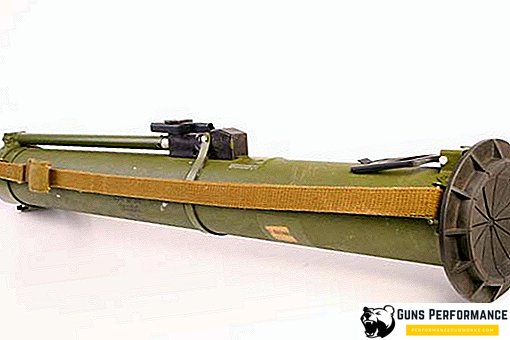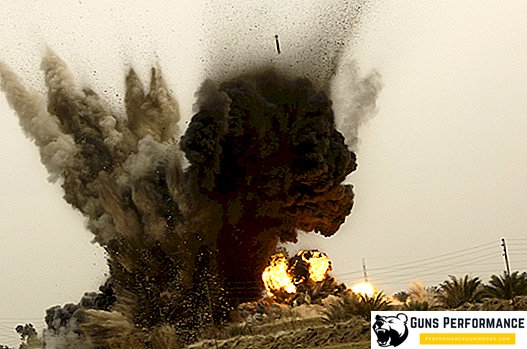Binoculars is an optical device that consists of two monoculars. Good binoculars will provide an opportunity to consider almost any object located at a considerable distance. The main advantage of binoculars is the display of spatial images, that is the same as we see with our own eyes.
The history of the emergence of binoculars
Even in ancient times, people tried to strengthen their vision, but it was not until 1608 that the first devices appeared, on the basis of which binoculars were invented. They were invented by Dutch optics Jacob Metzius, Hans Lippersgay and Zachary Jansen. Their invention was intended for sailors. It was a telescope, which allowed to consider objects at a great distance from the ship.
Using the development of the Dutch, Galileo Galilei in 1609 invented the first binoculars, and by continuing his experiments, he was able in 1610 to create such powerful binoculars, which increased to 33 times.
The first binoculars consisted of two lenses:
- The lens, the lens of which formed the image;
- Eyepiece, with diffusing lens.
Galileo's binoculars were imperfect, but in 1611 prisms were invented, which allowed to increase the viewing angle and measure the distance to the subject. These binoculars began to be called prism. They had one very serious drawback - they showed an inverted image.
Only in the 18th century, the English scientist Dolond invented the lens, which consisted of a diffusing and collecting lens, after which the binoculars in their structure became similar to modern models.

Characteristics of binoculars for tourists
The choice of binoculars for the tourist - the task is quite simple. You should not buy powerful binoculars, the best choice would be binoculars with a 7-10 fold magnification. Such models are relatively light and will not cause inconvenience in hiking. The size of binoculars for a tourist should be small, because besides him, a bunch of equipment should fit in a backpack.
If you do not know how to choose binoculars for the tourist, then choose a model that is not afraid of moisture. These binoculars are of two types, which are quite significantly different from each other in price:
- Waterproof optics (this is quite an expensive option);
- Binoculars with rubberized hull (more budget option, besides a layer of rubber protects the binoculars in the fall).
Tourist binoculars are indicated by two digits, the first of which tells how many times the binocular increases, and the second shows the size of the lens in millimeters (for example, 10x50 or 8x35).
Binoculars for hunting, features of choice
Inexpensive but quality bpc binoculars are perfect for hunting. The multiplicity of increase in hunting binoculars is selected depending on the type of hunting. If you hunt for large animals, luring them to a certain place, you need to choose optics with 10-15 times magnification. It will allow to see objects in the far distance. However, it is worth remembering that binoculars for hunting with large multiplicity significantly reduces the viewing angle. Field binoculars are also ideal as a hunting.
You need to choose hunting binoculars in a protective and waterproof case. If you are planning long-distance crossings, the weight of binoculars is also useless.
How to choose binoculars for night hunting

Many companies produce special binoculars, previously available only to the special services. This may be binoculars with a range finder, equipped with a screen, which gives information about the distance to the object of observation. It can also be used as night binoculars, because the image in these models is clear even at night.
Such models could ideally be suitable for beginner hunters, but there is one problem - this is a huge price that can exceed the price of a gun and equipment combined. If you have friends in the army, you can try to get through them the army binoculars of night vision "Alpha-NB-15" or something similar.

In the case of a shortage of finances, you can buy simple Chinese-made night-vision binoculars, but you should not expect quality work from it.
How to choose binoculars for fishing
Fisherman on the river or lake is perfect binocular bpts in rubberized case. If fishing is conducted in the sea, then you need high-quality marine binoculars.
Marine binoculars should have a maximum viewing angle, so its multiplicity should not exceed 10 times the size. If fishing or sea voyage is planned on a yacht, then you can choose a more powerful device by installing it on a special tripod.
Marine binoculars have a hull filled with nitrogen and do not sink in water. The body of such products is rubberized, so the marine binoculars will not deteriorate, even falling into the water. Often, marine binoculars are equipped with autofocus, which saves the wearer from the need to manually turn the setting wheel, and high-quality lenses will help to see the target even in the fog. Their disadvantage is the price, models with the "bells and whistles" are very expensive.

High-magnification binoculars or "astronomical" models
For many, observing space bodies is a fascinating hobby. The telescope is very expensive, therefore optical binoculars for observing stars are in stable demand. The size of such binoculars is too big, so it definitely needs a tripod. These models have a very narrow overview, but the details of a distant object can be seen quite clearly. The price of such binoculars is high, but not comparable with the prices of telescopes.
USSR binocular review
USSR binoculars were considered among the best in the world. Of course, we are talking about military samples, although the hunting binoculars were also of excellent quality. The most common models are:
- B8x30 USSR ZOMZ (Zagorsky OMZ);
- B8x30 USSR ZOMZ;
- "Photon" -7БКФЦ 7х35.
Many Russian binoculars are receivers of these models. All USSR military binoculars are still in stable demand, as they are much cheaper than their modern counterparts, and do not differ from them in quality.
If you do not know how to choose binoculars made in the USSR, then choose a military or naval sample with a high magnification. Small photon series binoculars are a good option for the modern tourist. They are equipped with multi-coated lenses, and a durable body reliably protects optics from accidental damage.

Binoculars with very large multiplicity
Binoculars with a magnification of about 100 times popular with ornithologists and zoologists. They are mounted on tripods and allow observing around the clock. There are such binoculars for the military industry, often they are equipped with electronics and powerful light filters. Such models are produced by the Zagorsk optical-mechanical plant.
The same powerful optics, only adapted for night observations, are produced by the Jupiter plant. Electronic models allow observation even in complete darkness.
Features of BOC binoculars and the reasons for their popularity
BOC binoculars from the Kazan Optical and Mechanical Plant are very popular among domestic hunters. The main reason for this popularity is the price-quality ratio. Experienced hunters claim that models from famous manufacturers (Zeiss or Leica) with the same declared parameters are no better than binoculars from KOMZ, with the price being several times lower. A huge range of models allows you to choose binoculars for their tasks at an affordable price.

Porto lenses are used in BOC binoculars; they have a center focus and a wide field of view. Here are some features of binoculars of this brand, allowing you to choose optics for each consumer:
- Any model can be ordered in various versions, with a rubber case, a ruby-coated lens, a net, and it is possible to assemble all these "bells and whistles" in one model, the plant provides such an opportunity. There is also a simple model, devoid of these "lotions";
- Binoculars with rubber coating can be considered a shock-proof model, as it is able to withstand shocks when it falls (this has been repeatedly checked by hunters);
- The ruby lens coating provides excellent picture quality even at dusk;
- Special angular grid helps to "calculate" the distance to the object of observation.
All these parameters, combined with an acceptable cost, have made BOC binoculars so popular among hunters.
Selection of binoculars, recommendations to a novice
The man who decided to buy his first binoculars, does not know what to start from. It so happens that by purchasing powerful and expensive binoculars, the owner remains dissatisfied, since the result of the purchase does not correspond to expectations.
- The first rule of choice of binoculars is the correct definition of the scope of optics. If you buy binoculars with multiplicity more than 10, you will need either a tripod or special skills to use such equipment. You should not choose binoculars with a frequency of more than 10, if you do not plan for hours to watch from afar for the lives of animals or birds;
- The next important parameter when choosing binoculars is the diameter of the lenses. The more it is, the more comfortable it will be to watch with binoculars, and the picture will be brighter and sharper. The minimum size of the lenses should be from 35 to 50. With a diameter of lenses above 50 binoculars will be quite massive and heavy, do not overdo it in pursuit of a clear picture;
- Focusing on the center is also very important. Expensive binoculars have autofocus, but electron optics are very expensive. Manual focus is the most common option, in more expensive models there is also a focused focus, which itself adapts to your eyes. Such binoculars are used by firefighters, rescuers and some hunters;
- The viewing angle shows the distance that a person sees through his eyes through binoculars. This parameter depends on the range of the binoculars. The higher the magnification, the narrower the viewing angle.
Also, all types of binoculars are divided into prism and lens. Lens binoculars - this is theatrical optics, to prism include all field binoculars.
There are two types of prisms:
- Porro (in this system, the lens and the lens are arranged in steps);
- Ruff is a more expensive system due to the complex polishing and polishing of lenses (this system uses a prism with two faces that are angled to each other).
When choosing a prism type, you should focus on the price-quality ratio, you should not take Ruf’s expensive prisms, if you rarely use binoculars.
Choosing a binocular manufacturer

Since the production of binoculars is a rather complicated process, you should not buy products of unknown brands. In the best case, their declared characteristics will differ by several points downwards. At worst, your binoculars will fall apart after several uses.
The best choice is to purchase binoculars from world famous brands. However, do not discount the domestic manufacturer. Many optical factories work for the defense industry, so their civilian models are of excellent quality at an affordable price. For example Belarusian BelOMO produces models. which do not differ from the military binoculars made in the USSR and are famous for their high reliability.
Proper care of binocular optics
High-quality binoculars will accompany its owner in all campaigns, where he can get into unpleasant situations. For example, fall into the water or dirt, in the winter to get into a snowdrift. It is better to buy binoculars with a water- or dust-proof casing, although even such binoculars are not insured against damage to the lenses. It is necessary to break or scratch the lens - and expensive binoculars can be thrown into a landfill, so the lenses should always be closed with special caps.
If there are greasy finger marks or sand on the lenses, you need to clean them with special binocular cleaning products. It is not necessary to carry out cleaning for prophylaxis, with any cleaning there is a small risk of damaging the lens coating.
Dust on the lenses never need to be blown away; you can scratch them. Use special cans with compressed air. In a pinch, use a soft brush. After there is no dust on the lenses, you can wipe them with special cleaning wipes.
Having bought expensive binoculars, remember that optics is a very fragile thing, so protect your lenses from damage.












